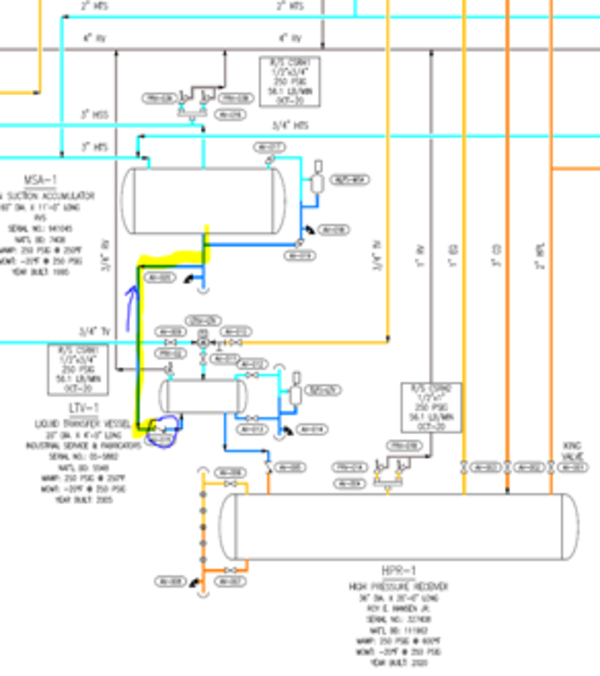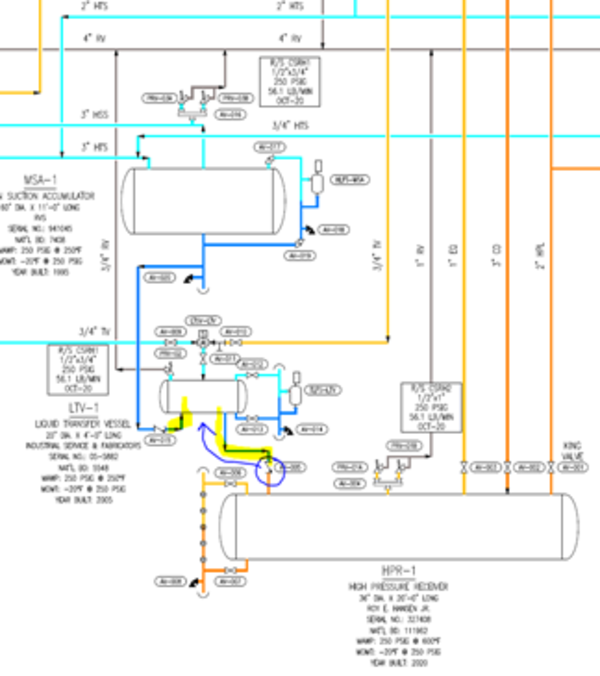P&IDs and PHAs (Part 3)
Title 29 CFR 1910.119(d) requires that process safety information be developed prior to conducting a PHA. Therefore, one can conclude that it is unacceptable to complete a PHA when P&IDs are absent. But if having P&IDs available is simply viewed as a formality, the PHA team will not reap the benefits of the drawings.
Often P&IDs will assist in visualizing and analyzing the scenarios being examined. For example, many flooded refrigeration systems are configured with a liquid transfer vessel (LTV) that is designed to move unwanted liquid on the low-side of the system back to the high pressure receiver. The piping that connects the LTV to the high pressure receiver and suction accumulator must have check valves to prevent reverse flow.

A common PHA question for this component is “What if a check valve in a transfer line fails?” By reviewing the P&ID, it is evident that there are two scenarios that must be scrutinized.
Scenario 1: The check valve between the suction accumulator and the liquid transfer vessel fails open allowing high pressure vapor to enter the suction accumulator when a transfer is initiated. The liquid transfer vessel will cease to transfer liquid in this scenario.
Without the P&ID, it is hard to visualize what is occurring in this scenario. But as displayed in the “marked up” P&ID below, if this were to occur, high pressure liquid would enter the suction accumulator when liquid transfer is initiated. This would result in tripping the high level float switch or possibly slugging compressors with liquid.

Scenario 2: The check valve between the liquid transfer vessel and the high pressure receiver fails open allowing high pressure vapor to fill the liquid transfer vessel at all times. The liquid transfer vessel will not be able to receive liquid from the suction accumulator and will cease to transfer liquid in this scenario.
As illustrated below, in this scenario the LTV would be continuously subject to high pressure which would prevent low pressure liquid in the suction accumulator from entering the vessel. Over time, liquid would accumulate in the suction accumulator, resulting in the high level float switch being tripped or the slugging the compressors with liquid.

This is Part 3 of a series on P&IDs. You can access previous blogs in this series below:
- Part 1: Introduction to P&IDs
- Part 2: P&IDs and SOPs

Leave a Reply